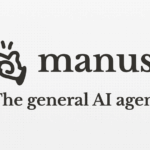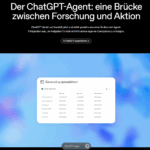What Is ChatGPT (Still) and Why Is It Everywhere?
If you’ve been anywhere near tech, automation, or productivity tools in the last two years, you already know the name: ChatGPT, developed by OpenAI.
It started as a text-based conversational assistant – helpful, fast, and eerily intelligent. But it’s evolved way beyond simple Q&A.
With the introduction of GPT-4o, function calling, memory, and custom instructions, ChatGPT is no longer “just” a chatbot. It’s becoming an AI agent – something that can reason, take action, and interact with tools.
What’s New: From Chatbot to AI Agent
The biggest shift in 2025?
ChatGPT is no longer passive.
Now, it can:
- Access files
- Call external APIs
- Trigger workflows
- Use plugins or third-party tools
- Remember context across sessions
- Perform reasoning and multi-step planning
In other words: It’s becoming an operational AI agent.
Whether you’re using the native ChatGPT Pro version or integrating via API – you’re now dealing with something that can think, act, and adapt.
The Real Benefits of Using ChatGPT as an AI Agent
Here’s why this is a big deal:
✅ 1. Less manual work
You no longer need to build rigid automations. The agent adapts based on context and need.
✅ 2. Faster prototyping
One prompt can now initiate a full sequence: read data → decide → write response → trigger action.
✅ 3. Human-like interaction
Agents respond in natural language but work in structured systems.
✅ 4. Scalable logic
You can replicate an entire assistant across teams – from support to operations to management.
How to Use ChatGPT as an AI Agent
There are two main ways to turn ChatGPT into a functioning AI agent:
🔧 1. ChatGPT (Web) + Custom GPTs
- Create Custom GPTs via OpenAI’s ChatGPT UI
- Add tools, file access, web browsing, or APIs
- Define personality, tone, goals
- Use it directly inside the ChatGPT app
This is great for non-coders or quick experiments.
🔌 2. ChatGPT API + External Agents (like LangChain, AutoGen, n8n)
If you’re building more complex workflows, you can integrate ChatGPT via API:
- Combine with tools like LangChain, AutoGen, or n8n
- Add memory (e.g. Redis, Chroma, Pinecone)
- Handle tool-use and function-calling flexibly
- Run it locally or in production systems
This is where real power emerges – and where we at AI Agent Lab are experimenting heavily.
Use Cases Already in Production
Here are some real-world scenarios where ChatGPT-based agents are already being used productively:
🧠 Internal Assistants
Automated internal agents that answer HR, IT, or process-related questions.
📊 Sales & Lead Qualification
Agents that talk to prospects, qualify them, and even write follow-up emails.
🧾 Document Understanding
AI reads contracts, extracts key data, and feeds it into CRM or ERP systems.
💬 Support Automation
Multi-step conversations based on company knowledge – with fallback to human agents.
📆 Personal AI Secretary
Schedules meetings, writes reports, summarizes meetings – all via natural chat.
What You Need to Be Careful About
ChatGPT as an AI agent is powerful – but not plug-and-play. Be aware of:
❗ Privacy & Compliance
Even with OpenAI’s EU servers, you need to check GDPR implications for your use case.
❗ Prompt Injection & Manipulation
Agents that call tools or APIs can be manipulated if you don’t sanitize input.
❗ Logic Control
The more autonomous your agent becomes, the more robust your guardrails need to be.
❗ Costs
Function calling, long contexts, and API usage can get expensive quickly. Monitor your usage.
Alternatives to ChatGPT for AI Agents
While ChatGPT is excellent, it’s not the only game in town. Depending on your needs, consider:
| Tool / Model | Notes |
|---|---|
| Mistral / Mixtral via Ollama | Local, open-source, fast |
| Claude 3 (Anthropic) | Very strong in reasoning, less aggressive tone |
| Google Gemini | Good integration with workspace tools |
| Meta LLaMA 3 (local) | Powerful and customizable |
| Command R (RAG-first) | Ideal for retrieval-focused workflows |
You can also run local agents using tools like LangChain + Ollama + n8n, for full privacy and no vendor lock-in.
Final Thoughts
The combination of ChatGPT and AI agent architecture marks a turning point. You’re no longer interacting with a chatbot. You’re building assistants. Systems. Intelligence that acts.
If you’re still using ChatGPT just for writing emails or blog intros – you’re missing 90% of what’s now possible.
Start small. Try a use case. Add a tool. Give it memory. Let it act.
And soon, you’ll be wondering how you ever worked without it.





Leave a Reply